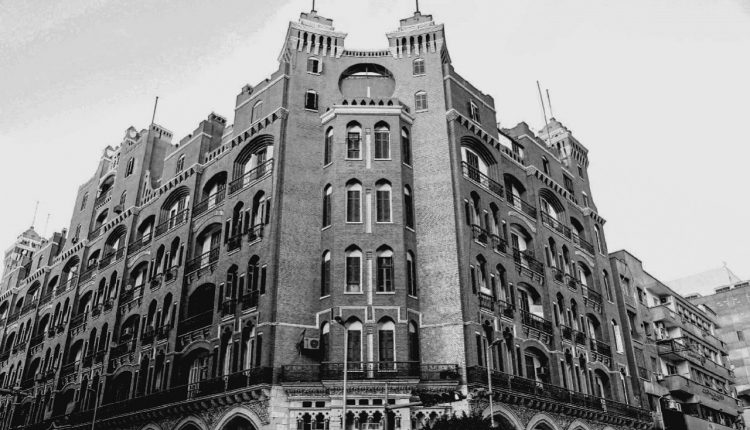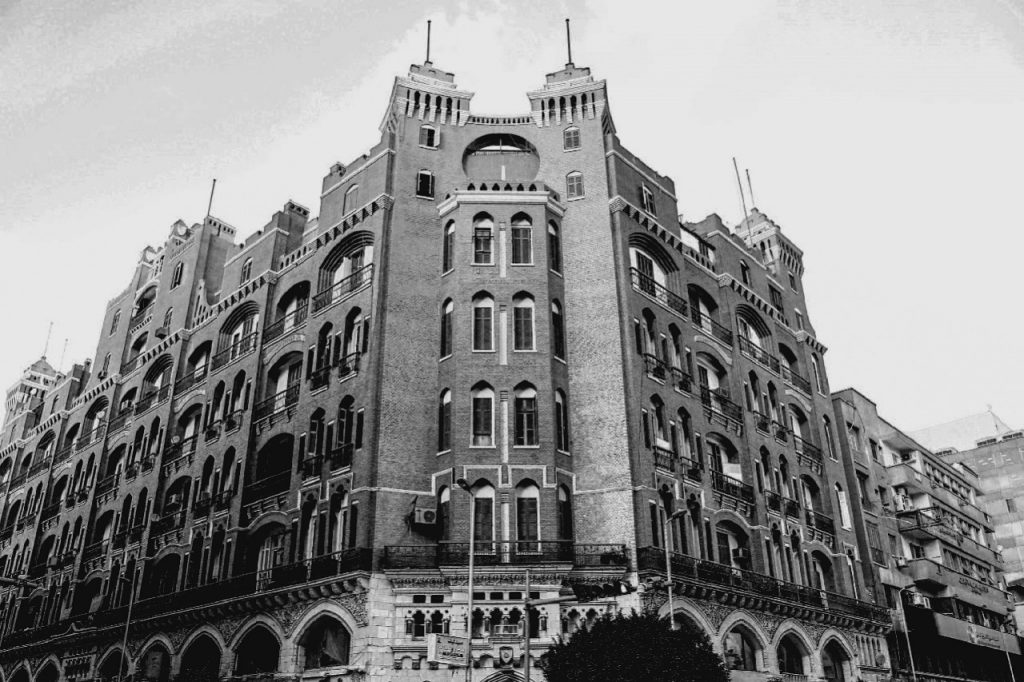When walking down the streets of Downtown Cairo, one cannot overlook the architectural charm of the old capital. Each street, square, and avenue holds a piece of history that is until now standing the test of time.
It all started when Khedive Ismail Pasha of the Alawiyya Dynasty of Khedivate Egypt took the decision to modernize the capital city, encouraging Europeans to come to the heart of the Middle East and bring an architectural revolution to the streets of Cairo with them.
Many of these buildings remain until today; here are some of the most iconic.
Groppi Building

At the heart of Talaat Harb Square stands the Groppi Building, a landmark that is as old as Khedivate Cairo, and one of the most illustrious buildings in all of Egypt. Built in 1924, the building belonged to the Swiss Confectioner Jack Groppi, who lived in one of its many apartments until the 1952 Revolution when a number of foreign-owned properties were nationalized.
Throughout the early decades of the 20th Century, the Café, named after Groppi himself, was very popular with Egypt’s opulent class for its introduction of new cultural elements into Egypt; in fact, many regarded it as a center of enlightenment at the time as the place regularly introduced artists and musicians to the public. Moreover, families came to celebrate birthdays as Groppi is renowned for its mouth-watering desserts.
The Yacoubian Building

No. 34 on Talaat Harb is the address of an iconic Art Deco-styled building that was the place to be during the heyday of the old capital. Built in 1934 by the Armenian Businessman Hagob Yacoubian, and named after him, the Yacoubian building is perhaps the most famed of all of Khedivate Cairo buildings.
A novel was written about the building, which was later turned into a movie adaptation; reportedly, it was the highest-budgeted film in the history of Egyptian cinema at the time.
A sister building lies at heart of the Lebanese capital with the same name. It also belongs to the same family.
Immobilia Building

Home to Naguib Al-Rehany, Mohammed Fawzy, Anwar Wagdy, Layla Mourad, Mahmoud El Meligy, and more, the Immobilia Building, at its prime, housed the crème de la crème of the Egyptian society.
Construction first started on the project in April of 1938 and continued for two years before the building was complete. It remains one of the biggest buildings of Downtown Cairo as it was built on a space of 5,444 squared meters. The building hosts 370 apartments with around 26 elevators, which made it an attractive place to live in at that time.
The Baehler Buildings

Composed of six semi-attached buildings built between 1927-29, the Baehler Building along with the Baehler passage in Downtown Cairo and the Baehler Mansion in Zamalek are the remnants of Charles Baehler’s heritage in Egypt. The renowned Swiss hotelier hired Leon Nafilyan as the main architect of the project, who was set to establish a fin de siecle Parisian-styled building, which would become a staple landmark of Khedivate Cairo.
The nearby Baehler passage housed a number of boutiques, haberdasheries, galleries, as well as clothing shops.
The Sednawi Building

The tallest building in all of Downtown Cairo, the Sednawi Building is composed of six floors and, like many buildings on this list, overlooks the iconic Talaat Harb Square.
The building is also well-known for its extravagant balconies, which are a myriad that reaches up to 14 balconies per floor.
Tiring Historic Building

At the heart of the historic Attaba neighborhood, between shops and souqs, the Tiring Historic Building, a lone neo-baroque edifice, stands out as a testament to bygone times.
Atop the building, four angel-like effigies carry an earth-shaped dome, somewhat resembling the ancient Greek Titan, Atlas, who was cursed to carry the earth on his shoulders for all of eternity. A driver on Al-Azhar Bridge can recognize the Tiring Historic Building by its unique dome.
Built in 1913, the building was owned by a businessman called Victor Tiring, who was deported from Egypt during the British occupation of Egypt because of his anti-British sentiment.



